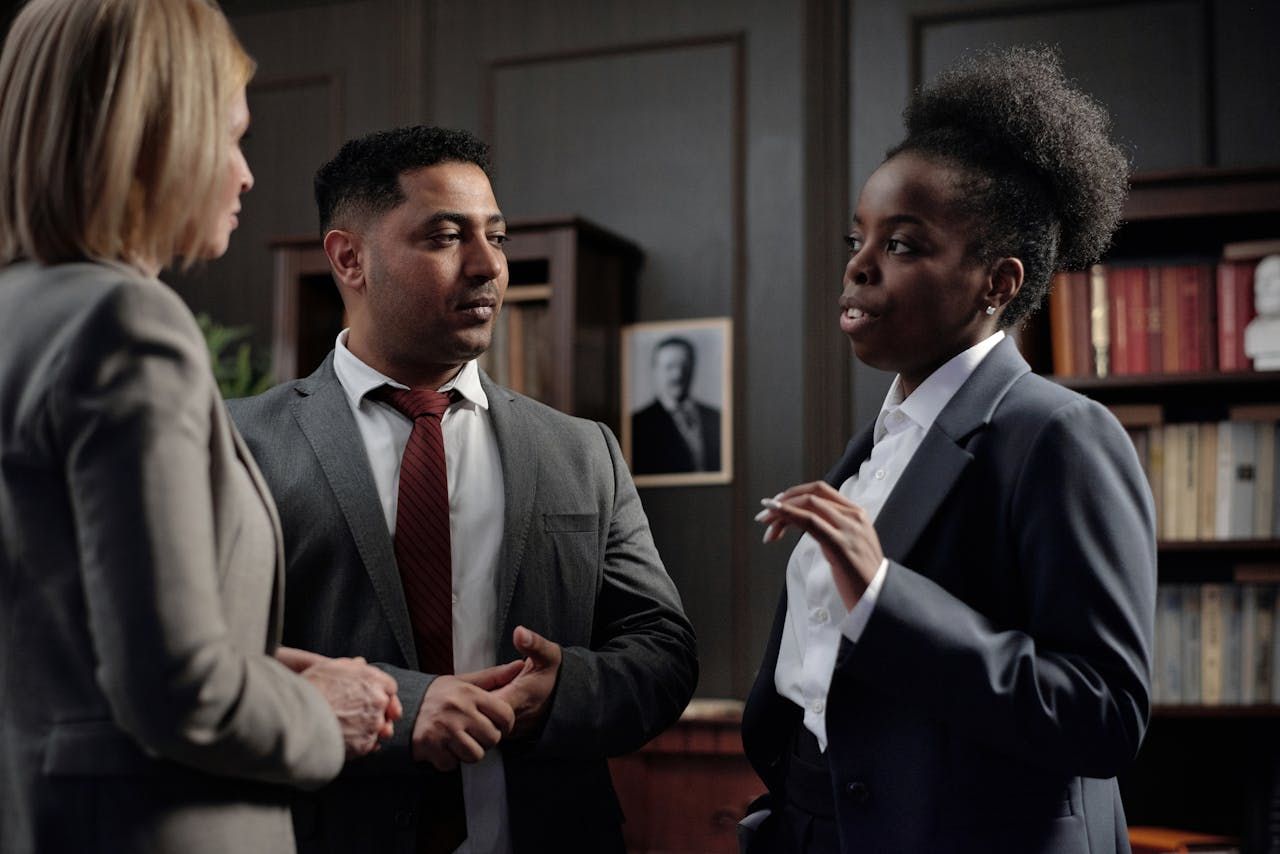Relationships For Business Success: Customer Service Training That Impacts
If building lifelong customer relationships is the lifeblood of any successful business, then why do many companies get this wrong? It can come down to one simple thing: Customer Service Training.
Many experiences have shown why customer service training isn't just about teaching people to be polite or smile, it's about building real relationships that keep businesses growing. There are so many training options out there on the market and choosing the right one that will make the right impact for you is key.

The Current State of Customer Service in Australia
Australian businesses are facing some serious challenges with customer retention currently. I've seen this first hand during my consultations across Melbourne, Sydney, and Brisbane. Just last month, I worked with a Café owner named Patricia in Perth who was struggling with staff turnover and declining customer satisfaction. Her story is unfortunately common as she had loyal employees without proper training inadvertently driving customers away. After some initial training she saw increased results and improvement straight away.
What's quite concerning is that many Australian businesses still view customer service training as an optional expense rather than a vital investment. This mindset costs our economy billions annually and represents countless missed opportunities for growth and connection for both the business and customers. One framework that helps companies build the case for investing in support training and understand its ROI clearly is discussed in The ROI of Customer Support Training.
The Science Behind Effective Customer Service Training
Current research reveals fascinating insights about how our brains respond to positive service experiences. Neuroscientist studies show that excellent customer service triggers the release of oxytocin, the same hormone associated with trust and bonding. This biological response explains why customers become emotionally attached to brands that serve them well. Sometimes just seeing their logo or branding can bring back to memory the emotions of the experience. For more on how trust and purpose in organization affect oxytocin release and bonding, see The Neuroscience of Organizational Trust and Business Performance.
Here's the thing, the best training I've seen doesn't just teach scripts. It works because it focuses on three simple ideas:
Empathy Development: Training that helps staff genuinely understand customer perspectives creates real connections. I remember working with a telecommunications Company where we implemented empathy exercises. Within six months, their customer satisfaction scores improved by 34%. Customers felt more connected.
Emotional Regulation: Teaching your staff members how to manage their emotions during challenging interactions prevents escalation or complaints and maintains the customer relationship. This skill is an invaluable one for a Retail client in Adelaide whose complaints decreased by 40% after implementing emotional intelligence training and de-escalation techniques.
Solution Focused Thinking: Rather than dwelling on problems, effective training looks for solutions. This approach transforms potentially negative experiences into opportunities for building stronger customer relationships. Concentrate on making the whole experience positive.
For deeper understanding, read how skills, tools and training are useful in building a career in customer success.
What Makes a Good Training Session
Through my work with over 200 Australian businesses, I've identified seven essential elements that make customer service training truly effective. These are:
Active Listening Skills: Most people think they're good listeners, but research shows we typically retain only 25% of what we hear. Comprehensive training teaches staff how to listen with their whole attention, ask clarifying questions, and paraphrasing or summarising what they have understood.
Communication Clarity: Clear, jargon free communication prevents misunderstandings and builds trust. I often share the example of James, a bank manager in Hobart, who reduced customer complaints by 50% simply by training his team to explain procedures in everyday language. The customers connected more to the message helping customer satisfaction.
Product Knowledge Mastery: Confident, knowledgeable staff inspire customer confidence. However, this goes beyond memorising features, it's about understanding how products solve real customer problems.
Conflict Resolution Techniques: Every business faces unhappy customers. Effective training provides practical tools for de escalating situations, finding common ground, and turning complaints into opportunities for showing the exceptional service.
Cultural Sensitivity: Australia's diverse population requires staff who can communicate respectfully across different cultural contexts. This training piece is increasingly critical in our multicultural business environment. Diverse teams work better together and help understand the differences in customer needs.
Technology Integration: Customer service often involves multiple communication channels. Training must address how to maintain consistent service quality across phone, email, chat, and face to face interactions. With Artificial Intelligence and other tech coming onto the scene it is important to take advantage of it, but also train up your team on it.
Recovery Strategies: When things go wrong and they will, trained staff know how to recover from it, often leaving customers even more satisfied than if no problem had occurred. Sometimes a problem is an opportunity to show the client what you are made of.
Strategies That Work
After watching hundreds of businesses try this stuff, I've noticed the ones that actually succeed do three things differently. They start small, focus on practical application, and are consistent over time.
One manufacturing Company in Newcastle started with a simple weekly 30 minute training session. They focused on one skill per month and encouraged staff to practice with each other. Within a year their customer retention improved by 28%, and employee satisfaction had increased.
Successful programmes also recognise that different learning styles require different approaches. Visual learners benefit from demonstrations and role playing, while analytical minds prefer understanding the reasoning behind service protocols. The best training programmes cater for multiple learning styles. The training that is tailored to the team works best. Technology integration in customer service is growing rapidly. You can see how tools and platforms shape customer interaction in the role of communication tools in enhancing customer service and satisfaction.
Regular reinforcement is also quite important. I've seen many tailored programmes fail because the training only happened the once and was never revisited. Effective organisations build ongoing learning opportunities into their culture through regular team meetings, refresher sessions, and peer coaching. Microlearning is a good example of reinforcement after the main event.
Measuring Your Training Effectiveness
What gets measured can get improved. Successful customer service training programmes establish clear metrics from the beginning and track this progress consistently. Key performance indicators (KPI) include customer satisfaction scores, complaint resolution times, repeat purchase rates, and employee confidence levels. Even the time on each call resolution can be measured to see if this is improving. For metrics on what to track in learning programmes and measuring customer training ROI, see how to measure customer training ROI with 15 KPIs.
I always encourage businesses to establish a baseline measurement before training begins. This provides clear evidence of improvement and helps justify continued investment or further training. One restaurant chain I worked with saw their average customer complaint resolution time drop from 3.2 days to 45 minutes after implementing structured training. If you don't measure it before your roll out the training you may miss important metrics.
Customer feedback is equally important. Regular surveys, focus groups, and mystery shopping programmes provide valuable insights into training effectiveness and areas for improvement. Watching your reviews online and also asking your customers how you are going, is just a small step in the right direction. For wider context check training industry statistics 2025 on Research.com.
Overcoming Common Challenges
Every business owner faces push back when implementing their training programmes. It is Either time constraints, budget limitations, and employee resistance are the most common challenges I encounter. Below are some ways we can work to solve these common issues.
The time challenge often resolves when managers realise that investing 2 or 3 hours monthly in training saves dozens of hours dealing with customer complaints and staff turnover. A Brisbane retailer recently calculated that their training investment saved them over $50,000 annually in reduced recruitment and retention costs. This long term advantage needs to be taken into account as although smaller training sessions take time, the outcomes over the long term are the main focus point if it can save you money.
Budget concerns become less significant when training is viewed as revenue generation rather than expense. Improved customer service directly correlates with increased sales, higher customer lifetime value and positive word of mouth marketing. Training can save you money on marketing or attracting more customers. So in a sense it make sense to invest in your team.
Employee resistance usually comes from fear or past negative training experiences. Addressing this requires creating safe learning environments where staff feel supported rather than criticised. Success stories and peer testimonials help overcome initial reluctance. It could be as simple of hiring some outside training talent over using your own internal trainer.
The Technology Factor
Customer service training must also address our reality. Customers expect seamless experiences across multiple platforms, and staff need skills to deliver consistent service whether interacting face to face, via phone, email, or social media. This means we have a more educated and impulsive customer than we did 30 years ago.
Artificial intelligence and automation are also changing the customer service landscape, but they're not replacing the human connection, they're enhancing it. When you have effective training it can helps staff understand how to work alongside technology to provide even better customer experiences.
Virtual and augmented reality training tools are becoming more accessible and effective too. These technologies allow staff to practice handling difficult situations in a safe controlled environment before facing real customers.
Building a Service Oriented Culture
Training alone isn't enough, lasting change requires cultural transformation. This means improving customer focused values throughout the Organisation, from the hiring process to performance reviews to even daily decision processes.
Leadership commitment is a non negotiable. When managers demonstrate exceptional service behaviours themselves the staff naturally follow. I've witnessed remarkable transformations in companies where senior leadership actively participates as well in training and modelling desired behaviours. This helps the team see they are leading by example.
Recognition and reward systems should be in line with service excellence goals. Recognising staff who go above and beyond for customers shows the importance of exceptional service and motivates others around them to follow suit.
Future Trends and Considerations
Customer service continues to evolve every day with the new inventions and technology. We are required to provide more personalisation, information on sustainability concepts, and our social responsibility stance to influence customer expectations. Training programmes must adapt to address these new or current trends.
Generational differences in communication preferences require a flexible approach also. While older customers might prefer longer phone conversations, younger consumers often favour text styled channels and shorter interactions. Staff need skills to improve across all communication styles.
Mental health awareness is now becoming increasingly important in customer service roles. Training programmes need to address stress management, emotional wellbeing, and work life / WFH (work from home) balance to maintain sustainable performance levels.
Concluding Remarks
After 20 years of training across Australia, I keep coming back to the same main concept: exceptional customer service is never an accident. It is done on purpose, with purpose. It results from investing in people, processes, and of course continuous improvement.
The businesses that thrive in your industry are those that recognise customer service training as fundamental to their success strategy. They understand every customer interaction is an opportunity to build lasting relationships.
Learning more about the impact your customer service training can have on your team, your bottom line and your brand is important. The customers are waiting, and with proper training, your team is ready to exceed their expectations. The only question is : when will you start?

































